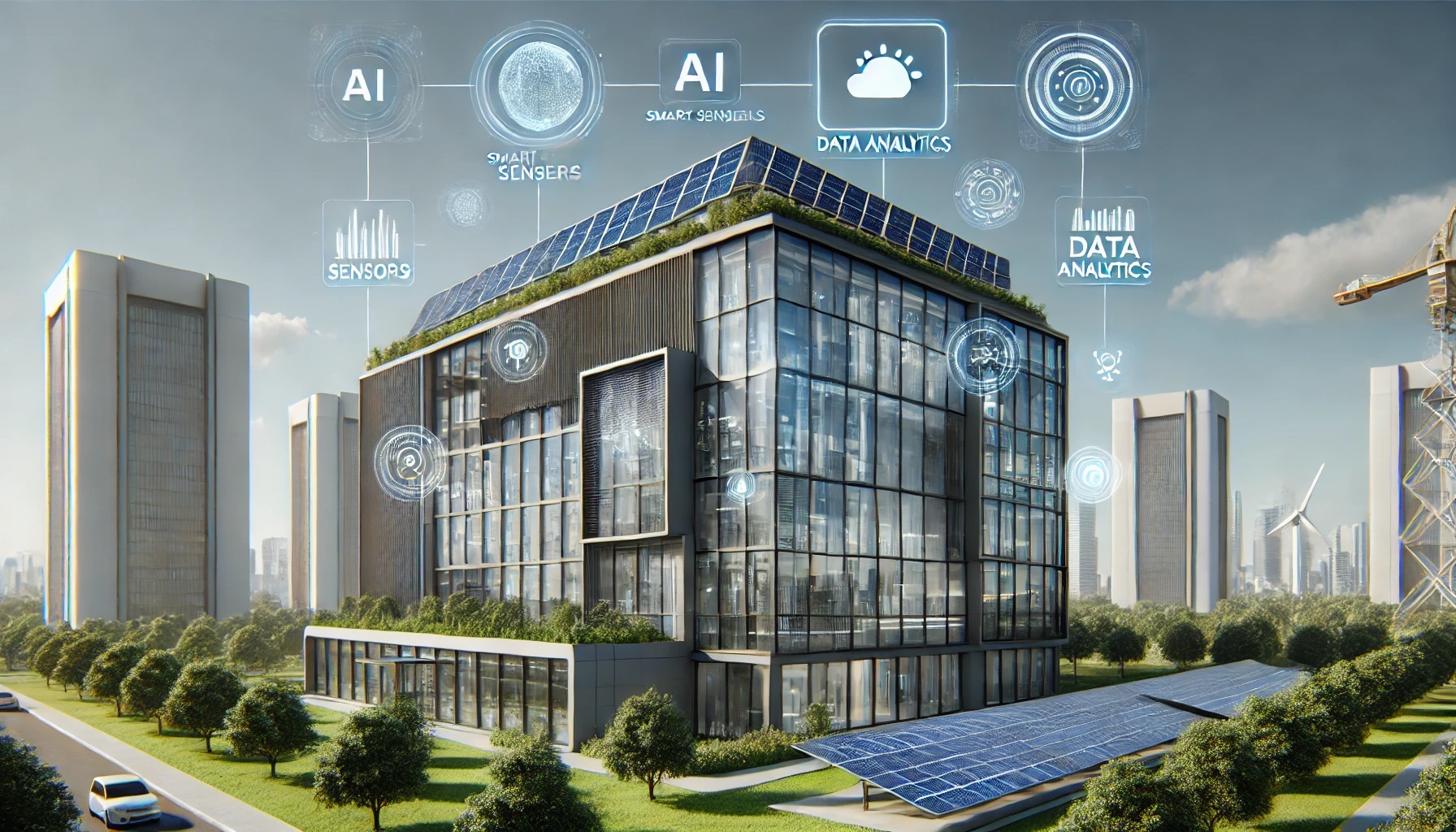
Artificial intelligence (AI) has helped create a new control system generation that automatically responds to weather, building occupancy, and many other conditions. These intuitive systems can help organizations meet their sustainability goals and reduce the need for ongoing maintenance. Intelligent systems can also help facilities staff work more proactively and minimize energy use without sacrificing comfort.
Advanced building control systems harness large data sets to see the big picture and react accordingly. Academic facilities managers have sought increased energy efficiency for decades, but the tradeoffs can be maddening. Sometimes, energy savings come at the expense of comfort. That is one of many reasons why applying AI to HVAC controls is so exciting. Owners can increase energy efficiency, and occupants don’t need to put on sweaters.
AI-informed autonomous controls offer significant advantages by integrating data from diverse sources. They facilitate real-time decision-making and anticipate future building needs. The benefits are substantial—ranging from energy savings and reduced carbon emissions to achieving sustainability goals and minimizing day-to-day maintenance. Most importantly, these intelligent systems leverage data to ensure optimal comfort—demonstrating their ability to adapt to specific room conditions.
Converting Data into Efficiency
Traditional controls operate based on current conditions, while autonomous controls, powered by advanced AI, take a more comprehensive approach. They incorporate a wealth of data—including temperature, cloud cover, humidity, HVAC equipment efficiency, and occupancy levels—to make informed decisions. This data-driven approach enhances the efficiency of building systems, leading to significant energy savings.
By leveraging these and other data, autonomous systems constantly tweak performance and can even see a few hours into the future to help inform real-time changes. By understanding what the building will need in two or four hours, the controls can make the necessary adjustments to ensure comfort and energy savings.
These systems can also affect utility rate structures and how a building impacts carbon emissions. When the sun is shining and the wind is blowing during the day, more green electrons may flow into the building. However, the same grid could be far dirtier in the evening. AI controls can incorporate that information into the ongoing decision-making process.
Ensuring Operational Consistency
 AI systems can also react in real-time to building usage. In addition to the weather, occupancy can change based on the calendar, and autonomous controls can account for both. That takes the pressure off facility teams who no longer need to make these detailed adjustments in each building.
AI systems can also react in real-time to building usage. In addition to the weather, occupancy can change based on the calendar, and autonomous controls can account for both. That takes the pressure off facility teams who no longer need to make these detailed adjustments in each building.
Experienced facility management teams intimately understand how their buildings operate and often make proactive changes to avoid complaints or other trouble. Sometimes that requires day-to-day tweaking, such as pre-cooling a space when it will be an extra warm day. With autonomous controls, building managers can take that off their plates, which is particularly important with current labor shortages—there may not be enough staff to provide complete coverage.
Another issue is deep institutional knowledge. When people retire or move on to different jobs, that intuitive understanding of how facilities operate under various conditions can leave with them. Because autonomous controls learn the nuances of buildings and equipment, they can bridge that gap and reduce the learning curve as new people take over.
Another advantage autonomous controls offer is consistency. Over time, operators’ adjustments to control settings can work against sustainability. Shortsighted tweaks may not apply a week later as conditions change, and busy facility managers may not have time to reevaluate. Sometimes, different employees or teams make contradictory changes that can throw a system out of whack. If this continues, teams must spend significant time and effort unwinding the changes and getting everything back on track.
Autonomous controls help keep a building consistently running at a high level, wringing maximum performance from each building’s HVAC equipment, even though it may be older and losing effectiveness. AI controls learn the capabilities within each facility and adjust to that data.
The Importance of AI Transparency
 While AI is a promising technology, it can be opaque to lay users. While these systems are autonomous and employees do not need to tweak them, that is not always sustainable. If teams do not understand how the systems operate, they may not be confident to leave them alone.
While AI is a promising technology, it can be opaque to lay users. While these systems are autonomous and employees do not need to tweak them, that is not always sustainable. If teams do not understand how the systems operate, they may not be confident to leave them alone.
AI complements traditional controls. Sometimes, AI will analyze a building and conclude that standard controls are doing great independently. When AI initiates adjustments, it makes them the same way a person would. A digital paper trail also shows what the system did and when. If the team wants to override the controls or needs to troubleshoot an issue, the AI system can be temporarily locked out.
A Learning, Growing System
AI controls learn from how the buildings are used, the local climate, and other factors, but they can also be taught through other means. These systems are connected to the cloud, enabling instant upgrades.
AI controls automatically use these inputs to help optimize the system 24 hours a day, seven days a week to reduce energy consumption and operate more sustainably. The AI-enabled service automatically identifies and performs system optimization actions in this same time. Its cloud-hosted algorithm analyzes complex, real-time data—including occupancy trends, predicted weather data, energy usage patterns, and more, to leverage every opportunity to conserve energy while maintaining comfortable, productive indoor environments.
Periodic software enhancements make these systems even more effective. For example, the American Society of Heating, Refrigerating and Air-Conditioning Engineers (ASHRAE) has established Standard 55, which governs how the indoor environment affects comfort. The standard incorporates more factors than just temperature, including humidity, outside temperature, and the types of clothing people might wear.
That ability for self-awareness underscores the flexibility advanced AI controls bring to the HVAC ecosystem. The word autonomous is in the name, but these systems are also amenable to human overrides when needed. Once installed, they provide a self-guiding layer of governance over HVAC equipment to provide the best possible comfort and energy savings. No tradeoffs are required.
Kyle Grimm is a controls account manager at Trane Technologies in Charleston South Carolina. He can be reached at [email protected].
Technology + Trends
Seeks to identify technology and trends evolving and emerging in educational facilities. To contribute, please contact Craig Park, field editor of this column.
See all Technology + Trends.


